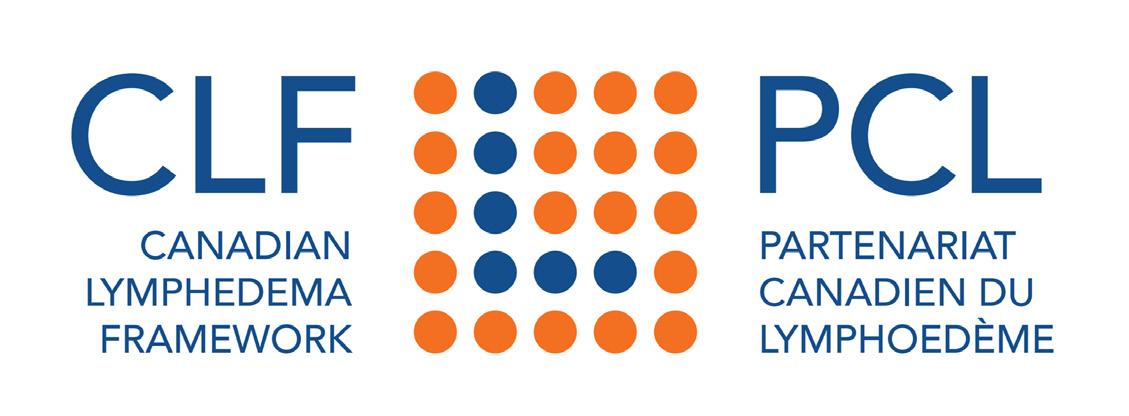




Youare reading the 45th issue of Pathways magazine. I didn’t want this milestone to go unnoticed without thanking our readers, sponsors, advertisers, authors and Editorial Board members. All of you contribute to make this publication what it is. We’re aiming for 45 more issues!
Lesli Bell is one of our featured contributing authors and an opinion expert on the edema that occurs in the chest wall and breast. We acknowledge the many cancer survivors who suffer from this type of lymphedema, which can be more difficult to diagnose and treat. We thank Lesli for her devotion to treating the complications that cancer and lymphedema patients have in order to improve their quality of life.

The ketogenic diet for lymphedema has garnered controversy within the lymphedema community. This issue provides our readers with both a Point and Counterpoint article as we approached experts in their respective areas to address common questions about the diet that you might have. Our aim was for our readers to be presented with a balanced view. We thank Doctors Leslyn Keith, Eric Westman, Cate Ward and
Christopher Gardiner for their contributions to this magazine.
The beautiful cover photograph (compliments of MediCanada) is of Isa-Bella Leclair and taken during her teenage years. We caught up with Isa-Bella six years later, and now an adult. She shares how her experience living with lymphedema equips her to manage her role in Ottawa to enable accessibility at the Parliament buildings. We continue to be inspired by this remarkable woman.
March 6 is World Lymphedema Day with awareness events and activities scheduled throughout March. The digital version of our Spring 2023 issue is made available complimentary in order to reach as many readers as we can during this awareness month. Our traditional Hints and Tips are expanded to two pages and written by Lori Radke, one of our Editorial Board members. We hope that these tips can help as many people as possible, those just diagnosed with lymphedema or living with it for many years. Please pass on your copy.
We congratulate our American colleagues (Heather Ferguson and the Lymphedema



Treatment Act). Their relentless advocacy efforts have resulted in the Lymphedema Treatment Act (LTA) finally passing into legislation. This federal law (passed December 23, 2022 and effective January 1, 2024), will improve insurance coverage for the medically necessary, doctor-prescribed compression supplies that are the cornerstone of lymphedema treatment. We encourage readers in Canada and other countries to support their local advocacy groups and write letters to political leaders, requesting increased coverage for lymphedema care. Our article on letter writing will give some tips to prepare you for the task. Happy World Lymphedema Day! LP
We sadly acknowledge that Professor Hugo Partsch passed away on January 26, 2023. Hugo was a pioneer and legend within the international lymphedema community. His many contributions advanced knowledge and practice in so many fields and specifically in our understanding of compression. Anna Kennedy

https://www.canadalymph.ca/our-people


Spring 2023 n Volume 12 Issue 2

Publisher
Pathways is published four times per year by BCS Communications Ltd. on behalf of the Canadian Lymphedema Framework.
Editorial Board
Mei Fu PhD RN FAAN
David Keast MD FCFP
Lori Radke PT CLT
Anna Towers MD FCFP
Editor
Anna Kennedy

Executive Director
Bonnie Baker
Editorial Assistant
Nicole Boulet
Advertising and Submissions
We welcome your ideas, contributions, letters and ad copy. While all material is subject to Editorial Board approval, inclusion does not constitute an endorsement or reflection of the views and opinions of the CLF and its Editorial Board. Contents may not be reproduced without written permission of the Canadian Lymphedema Framework.




Subscription Rates (1 year) Canada - $30.

United States - $60. International - $75. Single copies and back issues - $8.
Subscriptions/return mail to Canadian Lymphedema Framework 4800 Dundas Street West, Suite 204
Toronto, Ontario M9A 1B1
Telephone: 647-693-1083
Email: pathways@canadalymph.ca www.canadalymph.ca
Photos: L. Bell, I. Leclair, MediCanada. All stock images are CanStock.
Canadian Publications Mail Agreement 40065546
ISSN 1929-1418 • Printed in Canada

We acknowledge the financial support of the Government of Canada.
FOR PATHWAYS SUBSCRIBERS
LEARN MORE AND GET INVOLVED canadalymph.ca/WLD March 6 is World Lymphedema Day 20


 By Lesli Bell
By Lesli Bell

288,000 new cases of invasive breast cancer were diagnosed in the United States in 20221 and 28,600 in Canada13. Everyone enters the breast cancer journey with some surprise, to say the least. For 2.26 million people a year worldwide1 it will be the first time they have to navigate this new terrain. No matter what, when the “cancer” word enters your life there are fears, questions and the unknown. Thankfully there are caring oncologists, surgeons and radiation oncologists that have expertise in treating breast cancer. This article will discuss breast edema, an area that is not well-documented and defined but affects almost all breast cancer patients to some extent.
Breast-conserving (BCS) surgery (lumpectomy, or tumorectomy, rather than total mastectomy) is increasingly popular and has many benefits. However few people emerge from the treatment process without some sort of change or consequence. Some are minor, some are major and some don’t get talked about as much as they should. Lymphedema as a consequence of BCS is receiving much more attention these days, but is primarily described in the literature as pertaining to the arm.


One of the less discussed consequences of breast cancer treatment is breast edema and breast/truncal lymphedema. A systematic review9 noted that “The incidence of breast edema in breast cancer patients following breast conserving surgery (BCS) and radiotherapy is very broad, namely 0–90.4 %”2. There are multiple issues that the patient may contend with including pain, heaviness, lymphedema, radiation fibrosis, sexual issues, shoulder impairments, and ‘cosmetic unhappiness’ just to name a few.
Breast edema occurs in the postoperative phase and is expected. When breast edema lingers much longer than expected, we call it breast lymphedema. Both are physiologically due to lymphatic overload of the tissues3 Regardless of how long it has been present, it is appropriate to treat post operative and/or post radiation edema if it is bothersome, problematic, or painful for the patient. One of the difficulties in documenting and researching breast edema and breast lymphedema is that there is no consistent and objective way to measure it2 Without consistent measurement, it is hard to prove positive change with treatment. However, there are still clinically effective treatments that are safe and consistent with how we presently treat lymphedema of the upper extremity.
Lesli Bell received a BSc in PT (California State University), a doctorate in PT (Regis University) and her lymphedema certification (Lerner). She has owned a private practice (Winooski VT) since 1987, specializing in orthopedics, chronic pain and swelling disorders. Lesli co-developed the Bellisse Compressure Comfort Bra (1999) for patients with breast and chest wall edema/lymphedema.

Common symptoms and signs of breast and truncal edema/lymphedema include an increased volume of the breast, “peau d’orange” (inverted hair follicles due to edema in the area giving the skin an orange peel appearance), heaviness of the breast, redness of the skin, breast pain, skin thickening, hyperpigmented (darkened) skin, and a positive pitting (edema) sign2,7

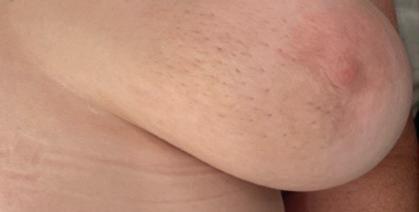
The risk of developing upper extremity lymphedema increases with higher BMI, increasing number of lymph nodes removed, seroma, cording, a history of radiation and surgery, and some types of chemotherapy11
These are likely risk factors for chest wall edema/lymphedema as well. Breast cancer treatment affects the skin, breast tissue, and connective tissue of the trunk and less frequently some internal organs. “Breast edema/ lymphedema appears to be very common, and a source of problems for many patients recovering from breast cancer treatment”4
Under best circumstances after the diagnosis of breast cancer, the patient will be evaluated by the medical team, including an oncologist, a
surgeon, and a radiation oncologist. If prospective surveillance is included in this evaluation, a therapist specializing in cancer-related lymphedema or in oncology will also assess the patient. Stout et al published a paper “A Prospective Surveillance Model for Rehabilitation for Women with Breast Cancer” in 2012. “Prospective surveillance identifies time points during breast cancer care for assessment of and education about physical impairments. Implementation of this model may influence incidence and severity of breast cancer treatment-related physical impairments. The model seeks to optimize function during and after treatment and positively influence a growing survivorship community”4. The paper describes a cost savings and significant reduction in patient complications and fears over the first year or two of recovery. At this time, it is unknown how many institutions have implemented this program in their breast cancer centers. Prospective surveillance assessments might include measurements of both arms, assessment of any older injuries or limitations to the arms, shoulders, or spine, and education regarding rehabilitation, lymphedema and how to navigate any pre-morbid conditions during breast cancer treatment4. Bioimpedance Spectroscopy (BIS) has been demonstrated to identify lymphedema in the extremities and is a recommendation in the clinical practice guideline of the Academy of Oncologic Physical Therapists5. BIS identifies small lymphedema related fluid changes in the limbs by assessing extracellular fluid and aides in the detection of lymphedema much earlier than using a tape measure6. Tissue Dielectric Constant (TDC) values are quantifiable measures of localized skin tissue water and may be able to detect breast/trunk lymphedema. “TDC may be a beneficial tool in the early detection of breast cancer–related trunk lymphedema, which could trigger intervention”7. Both evaluations are most
meaningful if there is a baseline assessment before breast cancer treatment.
If a patient does not have access to a prospective surveillance program, self-taken pretreatment measurements of the upper extremity have been validated by Rafn et al8 The patient can use a common tape measure to take measurements of both arms at the wrist, mid forearm, and mid upper arm. Measure longitudinally along the arm where these lines are and make a mark8. Or pick an identifying spot, mole, or scar that allows one to consistently measure the circumference of the limb in the same place. Take note of the shape and consistency of the tissue on the limb and take note of the visibility of veins in the forearm and hand. Look at the shape and position of the nipple and compare it to the unaffected side. One may even want to take a pre-treatment picture of the chest wall for comparison in the future. It would be wise to revisit and retake these measurements every four weeks after breast cancer treatment has started or if you feel changes such as heaviness, thickening of skin, pain in your breast, trunk, or arm. If there is greater than a one-centimeter change in these areas compared to the unaffected side, consultation with a lymphedema therapist would be recommended.

Despite the benefits of breast conserving surgery some women will be troubled by breast edema that may cause an unsatisfactory cosmetic result influencing their quality of life2 After any kind of surgery there will be expected edema during the healing process with signs of improvement in 3-4 weeks or at least be changing in a positive direction. If lymph nodes were removed, either for sentinel lymph node biopsy (SLNB) or axillary node dissection, the swelling may take a little longer to reduce.
Under best circumstances after the diagnosis of breast cancer, the patient will be evaluated by the medical team, including an oncologist, a surgeon, and a radiation oncologist. If prospective surveillance is included in this evaluation, a therapist specializing in cancer-related lymphedema or in oncology will also assess the patient.Examples of cording, peau d’orange, scarring fibrosis in the axilla
Compression where you need it with JOBST®
JOBST JoViPak in combination with the JOBST JoViJacket is designed for lymphedema compression therapy during the night. The 4 blend foam mix and stitched channels are designed to create multiple pressure points and stimulate lymphatic drainage. These garments for edema management come in various styles and, with the addition of specialized pads, are designed to provide comfort and control from head to toe.
JOBST® JoViPak®. Full body solutions for reliable lymphedema management during night-time
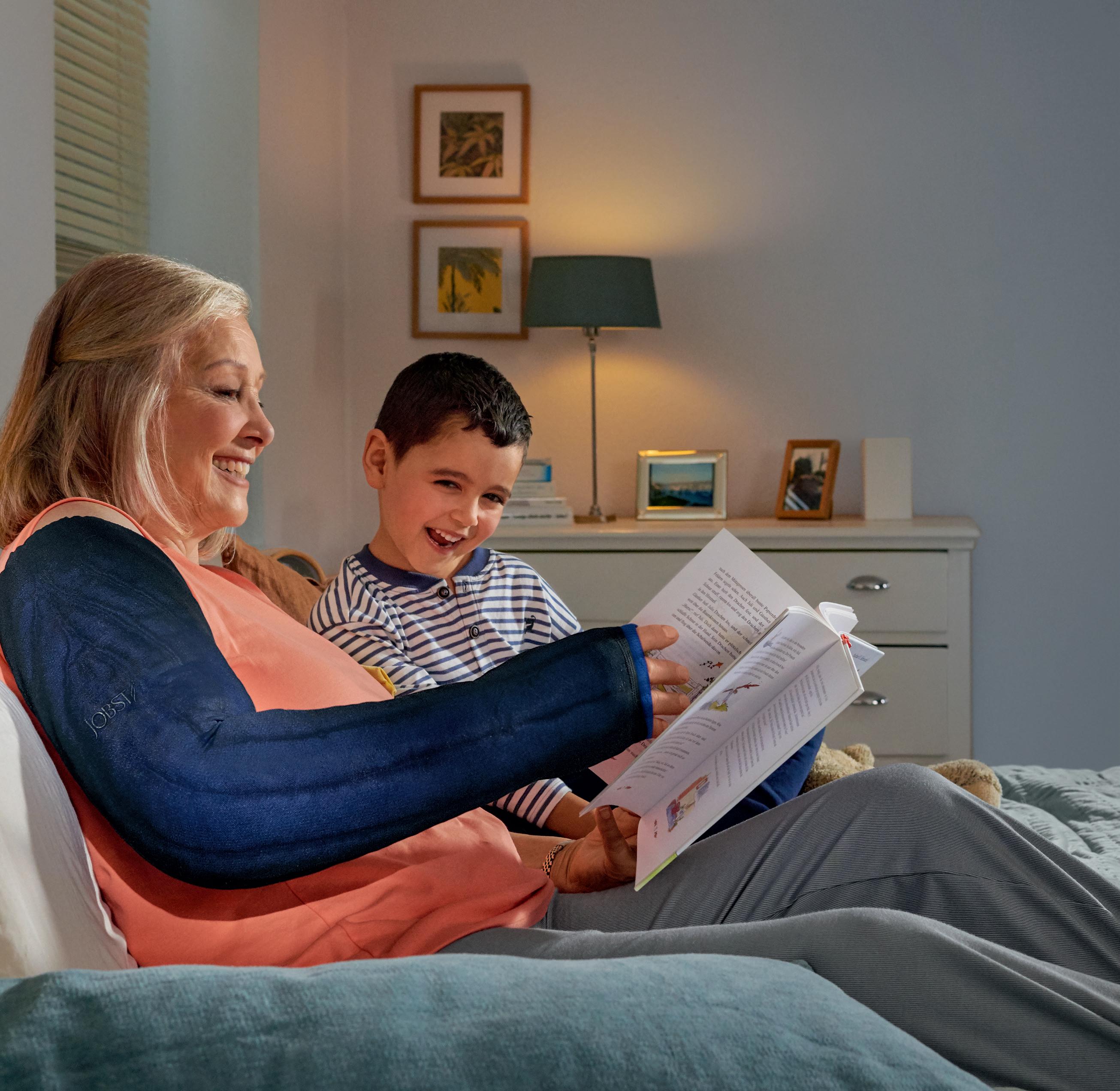
https://www.jobstcanada.com/
jobstcanada.com
1-877-978-5526
Radiotherapy may aggravate the swelling process, causing sudden or slow increases in breast edema early in the radiation process, but more commonly occurs toward the end of treatment or after radiation is complete. It is usually characterized by skin thickening, which usually peaks at 4-6 months9. Scarring, fibrosis and peau d’orange can linger even longer.
Appropriate treatment should yield a decrease in breast swelling, truncal fullness, skin thickening, scarring and pain9. Almost all swelling responds to lymphatic treatment and compression and initiating early treatment may help expedite the healing process. This may include complete decongestive therapy (CDT), which consists of manual lymphatic drainage, exercise, infection risk reduction strategies, and compression garments. Soft quilted shredded foam pads may be beneficial for swelling, scarring, peau d’orange and fibrosis. These quilted foam pads are made from very soft fabric, filled with different densities of chipped or shredded foam. These pads can be worn under the compression bra or vest.
Some of the specialized techniques for scars and skin thickening might include cold laser12, elastic taping and manual scar stretching. Reducing scarring, skin thickness, pitting, peau d’ orange, and fibrosis can significantly improve the ability of fluid to move out of the congested area and may

reduce severity of edema and future problems with lymphedema.


Development of redness, streaking, extreme heat, and localized pain in the chest, breast or arm should always be evaluated by a physician, as it may be first signs of an infection that may require antibiotics. However, the pinkish and redness in the breast or arm may also be signs of tissue inflammation from pooled fluid in the area. If this is the case, then antibiotics will not work to reduce the swelling. Infection and inflammation may be hard to distinguish, and usually physicians will err on the side of safety, treating it as if it were an infection. If it is inflammation, treatment by a lymphedema therapist can often be very helpful by reducing the swelling.
Most patients will wake up with some sort of chest compression vest or bra on following surgery to hold dressings in place. How long to use this compression is often unclear. When lymph node dissection has been performed, and/or swelling is persistent, compression might be beneficial for quite a bit longer than a few weeks post-operatively. Breasts are largely composed of adipose and glandular tissue, which make it easy for fluid to accumulate. There is also no muscle pump in the breast to help move lymphatic fluid. A compression bra or vest should fit well, be snug but comfortable, and feel secure, similar to a well-fitting “speedo” swimsuit. The bra or vest should also not impede breathing. One should avoid compression garments that create a tourniquet effect (especially under the breasts and around the trunk). The breasts should be comfortably lifted and compressed to the chest wall (reducing the pendulous position). This will assist with
fluid draining from breasts and inhibit refilling. Wearing the compression vest/bra for several hours during a 24-hour period, whether it is day or night (with or without the quilted shredded foam pad) may help manage the breast swelling. It is also ‘OK’ to wear traditional bras when desired appearances of clothing are important.
Paying attention to the response of the swelling will help dictate how many hours of compression are optimal. When vascular reconstructive surgery is performed on the chest wall or breast, compression of the chest wall will need to be discussed with the surgeon.
While surgical and oncological treatment is lifesaving, treatment for breast edema and lymphedema can preserve quality of life. Breast edema and breast lymphedema deserve treatment when it is bothersome, painful, and/ or there is a significant increase in volume. If there is scarring, fibrosis, and cording, treatment with a lymphedema trained therapist using manual techniques and CDT, a wellfitting compression vest/bra, and quilted shredded foam pads can be very beneficial. The lymphedema and oncology trained therapist can be an enormous asset to the patient as they move through the breast cancer journey, allowing early identification of impairments, and treatment before problems become chronic. A patient should freely discuss any of these conditions with the treating physician and consider asking for a referral to a specialized therapist who can help them navigate the journey of breast cancer treatment and beyond. LP
References can be found at https://canadalymph.ca/pathwaysreferences

Some of the specialized techniques for scars and skin thickening might include cold laser, elastic taping and manual scar stretching.
The ketogenic diet has grown in popularity these last few years for both the general public and those living with lymphedema. The diet has also garnered significant controversy, specifically within the lymphedema community. We took the opportunity to have some of the common questions addressed with leading opinion experts.
The following POINT and COUNTERPOINT articles are the compilation of several communications including Zoom interviews between Dr. Anna Towers (Editorial Board member and Director of the Lymphedema Program at the McGill University Health Centre) and our esteemed authors. Our aim was for readers to be educated and presented with a balanced view in order to draw their own conclusions. It is imperative that you consult your healthcare provider before making any drastic dietary change. We recommend you also review the references and additional resources the authors have provided, that can be found online at https://canadalymph.ca/pathways-references.

Key points addressed by Leslyn Keith, in collaboration with Eric Westman

In our clinical practices, a ketogenic diet has been a valuable intervention for lymphedema and lipedema symptom management. Promoting health through ketogenic nutrition is not new, as it was commonly referenced in medical papers in the first half of the last century for treatment of diabetes and epilepsy before medications existed for these conditions1,15 Studied extensively in the last 25 years, a
ketogenic dietary plan has shown considerable promise as a viable intervention for a variety of health conditions, such as obesity, diabetes, heart disease, epilepsy, cancer, and mental health disorders4,7,9,18,23,37. In this article, we answer a few common questions and discuss how ketogenic nutrition can be an important part of lymphedema and lipedema treatment and self-management.
A ketogenic diet is a pattern of eating that restricts carbohydrates, such as starches and sugars, to such a degree (usually <50 grams
Leslyn Keith is a certified lymphedema therapist with a Clinical Doctorate in Occupational Therapy. She has been treating lymphedema and lipedema for over 20 years. Dr. Keith is the author of two books that promote a ketogenic diet for lymphatic disorders and developed Lymphatic Lifestyle Solutions.
Eric Westman, MD, MHS specializes in obesity medicine and internal medicine and has conducted several clinical trials and authored several books on low carbohydrate and ketogenic diets. He was on the doctoral committee for Leslyn Keith’s pilot study examining the effectiveness of a ketogenic diet for lymphedema and obesity.
of carbohydrate per day) that ketones are generated20,35. Therefore, a ketogenic diet really is a low-carbohydrate diet that harnesses the beneficial effects of ketones by virtue of being an ultra-low-carbohydrate diet.
The Carbohydrate-Insulin Model (CIM) has been proposed as a mechanism for how a very low carbohydrate ketogenic diet can promote not only healthy weight loss but also improved overall health21 This model suggests that carbohydrate restriction limits the body’s access to glucose and necessitates that an alternate fuel source be used, namely ketones and fatty acids. The decreased consumption of carbohydrates has the added benefit of reducing the amount of circulating insulin. Insulin is released from the pancreas in response to glucose, the basic component that all carbohydrates break down into. One of the many jobs of insulin is to limit fat-burning and increase fatstorage. Thus, limiting carbohydrate consumption will allow body fat to be used for energy instead of being stored and contributing to obesity.

What is the proven safety and effectiveness of a ketogenic diet. For example, aren’t carbohydrates essential?
The human body actually needs very little carbohydrate, or glucose, and can function very well using ketones and fatty acids for fuel34 Because humans can make any needed glucose through a biological process called gluconeogenesis, restricting carbohydrate consumption to very low levels is perfectly safe33. New research has shown the lymphatic system also does well with limited carbohydrate consumption. Lymphatic endothelial cells, those cells that form the vessel walls of the lymphatic system, have a preference for ketones, even in the presence of glucose11, and ketones and fatty acids elicit lymph vessel growth36
than two years tend to be observational, which means we are unable to draw any conclusions regarding causal relationships. However, it gives us a place to start. One such very large observational study, the Prospective Urban Rural Epidemiology (PURE) lifestyle study, followed over 135,000 patients from 18 different countries in five continents for approximately 7½ years31 The researchers reported that their data on diet showed a benefit with higher fat consumption, even saturated fats. They suggest that a diet too low in saturated fats may be harmful. An example of a clinical trial (i.e., not simply an observational study) is the twoyear study by Virta Health that examined the effectiveness of a ketogenic diet for diabetes
kg/m2 14 For this reason, it becomes critical to address both the lymphatic disorder and obesity with a single dietary plan. The fact that the presence of obesity, but not a high-fat diet, was shown to negatively impact lymphatic function in two independent animal studies12,13, gives us hope that a ketogenic diet may be the answer.
Why do you recommend the ketogenic diet for lymphedema and lipedema?

Do people need to be concerned regarding cholesterol with ketogenic eating?
For the most part, it seems that following a ketogenic eating plan has a positive effect on cholesterol. For instance, in the majority of studies comparing low-carbohydrate or ketogenic diets with low-fat diets, the lipid panel becomes more favourable with carbohydrate restriction22 In a pilot study of nine women with lipedema, triglycerides reduced significantly after seven weeks on a ketogenic diet but then returned to the higher baseline levels after just six weeks back on a standard high carbohydrate diet27 It has been shown, however, that cholesterol levels in the blood may rise during weight loss28 This occurs with any diet, not just a ketogenic diet. It should also be noted that there is a small subset of the population that will experience elevation of certain lipoproteins with a ketogenic diet. There is currently a study underway to understand if the high levels of LDL in this group are harmful24
Nutrition research, especially studies of long duration, can be challenging and costly8
For this reason, diet studies that last longer
management4. This study showed excellent outcomes (including better blood sugar control, weight loss, reduced need for medications, and diabetes remission) sustained over the two years without adverse events. Dr. David Ludwig20, in his paper reviewing the evidence for a ketogenic diet, reported meta-analysis reviews of a total of 77 dietary clinical trials that showed higher fat diets, including a ketogenic diet, were found to be superior to all low-fat diets for health outcomes.
Can you explain the pathophysiology of lymphedema & lipedema?
While lymphedema starts with excessive fluid accumulation and lipedema begins with fat tissue expansion, both conditions can ultimately result in similar chronic tissue and skin changes such as edema, fat proliferation, inflammation and fibrosis10. Additionally, both conditions can be exacerbated by a third chronic condition: obesity. While the current prevalence of obesity has topped 42% in US adults29, the occurrence of this condition is even more pervasive in lymphedema and lipedema populations17, 5. Unfortunately, lymphatic function may be irreversibly damaged with a BMI of above 50
Recent research has confirmed what we have seen in clinical practice: characteristics and underlying pathophysiology of lymphedema and lipedema may be favourably impacted by a ketogenic diet. For instance, edema and limb volume reduction in participants with lymphedema has been seen in response to a ketogenic diet in both animal and human studies11,28,36, with a current clinical trial in progress that has already shown promising results32 Pain reduction, often independent from weight loss, was observed in several studies using a ketogenic diet for participants with lipedema2,6,27. Better outcomes were observed for women with lipedema, including improved blood panel, decreased pain, and reduced body fat on the lower body, with a ketogenic diet compared to a moderatecarbohydrate or a low-fat diet3,16
Do you have any concluding statements?
In our clinical experience, even when weight loss is not desired or warranted, ketogenic nutrition may prove to be central to managing chronic lymphatic and fat disorders such as lymphedema and lipedema. Because a ketogenic diet is a weight-regulating diet rather than an exclusively weight-loss diet, this eating plan can be used to promote health, not just to promote weight loss26. For those who find it a challenge to adhere to very low carbohydrate levels long term, it has been shown that a modest decrease in carbohydrate has beneficial effects on lipedema symptoms, though not to the prescription-strength effectiveness of a ketogenic diet16 The most effective eating plan is the one that is satisfying and sustainable over a lifetime. LP
References can be found at https:// canadalymph.ca/pathways-references
Sustained, therapeutic compression for up to seven days, with less slippage and increased comfort means more time worn. Clinically proven to be more effective at managing edema.1

The thin, lightweight materials create a breathable sleeve, allowing patients to wear their own shoes and clothing. The increased comfort helps mobility leading to more effective treatment.
72% of patients prefer two-layer compression over alternative options.¹ Treatment is more effective when their comfort is prioritized.
Key points addressed by Cate Ward, in collaboration with Christopher Gardiner.
Theketogenic diet, commonly known as the “keto diet,” is a high-fat, low-carbohydrate diet that has gained popularity in recent years, however, has been used as a treatment for epilepsy since the 1920s. Proponents of the diet claim that it can lead to weight loss and other health benefits. However, there are also potential drawbacks to the diet, including: risk of nutrient deficiencies, increased saturated fat intake (unadvised for fatty liver disease and cardiovascular health), difficulty eating in social situations, reduced ability to maintain over a long period of time, and decreased athletic performance. In this article, we will discuss the pros and cons of the ketogenic diet for people with lymphedema.
Weight loss can be especially beneficial for people with lymphedema, as excess weight can put additional pressure on the lymphatic system and worsen the condition. Losing weight can help to reduce the risk of developing lymphedema or improve symptoms in those who already have the condition. It is important to work with a healthcare professional to determine the most appropriate diet for individual needs.
How does the keto diet compare with other diets?
One potential benefit of the ketogenic diet for people with lymphedema is weight loss. The diet is designed to promote the production of ketones, which are produced when the body
breaks down fat for energy. A keto diet is quite restrictive, and thus, may encourage weight loss by moving diet participants into a calorie deficit. However, it is important to note that any diet that moves an individual’s intake into a calorie deficit can lead to weight loss. In the Keto-Med trial by Dr. Christopher Gardner and his group at Stanford, participants lost similar amounts of weight on either a wellformulated ketogenic diet or a Mediterraneanplus diet, with no significant differences across the groups (Gardner et al., 2022).
What were the results of the Keto-Med study?
Keto-Med study compared two low-carb diets, the well-formulated ketogenic diet (WFKD) and the Mediterranean-plus diet (Med-Plus), in adults with prediabetes or Type 2 Diabetes Mellitus (T2DM). The main differences between the two diets were the inclusion or exclusion of legumes, fruits, and whole grains. The study found that both diets resulted in significant improvements in glycated hemoglobin (HbA1c) levels after 12 weeks, but there were no significant differences between the two diets for this outcome. The dietary adherence assessment indicated similar levels of adherence between the two diets. Although weight loss was not discouraged, the study diet design did not include a prescribed energy restriction and was not intended to be a weight loss study. Participants were told to eat until they were satiated throughout the study. Significant weight loss occurred for both groups (WFKD and Med-Plus) at week 12 of the study, however, no differences in weight loss were seen across groups.
Cate Ward, PhD, RD is a postdoctoral fellow at Stanford School of Medicine

Her current research focuses on the metabolic effects of a plant-based diet.
Dr. Ward works with patients via her private nutrition practice
https://www.catepward.com

Christopher Gardiner PhD is a nutrition scientist with more than 26 years of research, studying the best foods to consume for optimal health and how to motivate people to achieve healthy dietary behaviours. He recently led the Keto-Med study, comparing outcomes of the well-formulated ketogenic diet or a Mediterranean-plus diet.
It may be difficult to maintain adherence to a ketogenic diet in the long-term, as it requires a significant change in eating habits and may be challenging to stick to. In the Keto-Med trial, adherence to both Med-Plus and WFKD were very similar in the intervention (Landry, M., et al. 2021). However, it is important to note that each diet period was only 12 weeks long. In this paper, Dr. Landry highlights how many studies fail to capture adherence, which is a shortcoming. Longer-term studies are needed to assess sustainability of ketogenic diet adherence over time.
Although following a ketogenic diet may aid in weight loss, there are also potential drawbacks to the ketogenic diet for people with lymphedema. One concern is the risk of nutrient deficiencies. The diet is low in carbohydrates, which can lead to a deficiency in important nutrients such as fiber, vitamins, and minerals. It can also be low in fruits and vegetables, which are important sources of micro-nutrients and fiber, potentially disrupting gastrointestinal regularity and is not ideal for long term health outcomes.
Following a ketogenic diet can also be challenging in social situations, as it may be difficult to find food options that fit within the strict guidelines of the diet. It may be necessary to bring separate food to events, and to make special requests when dining out. When dining with family members who do not follow a ketogenic diet, it can be challenging to prepare separate meals that fit the keto diet requirements. Aside from medical treatment, a ketogenic diet is generally not recommended for children due to its restrictive nature, as their growing bodies and developing brains have different nutritional needs compared to adults. Children require a balanced diet that includes a variety of nutrients, including carbohydrates, to support their growth and development.
Is fatty liver disease a concern?
The quality of a ketogenic diet can impact metabolic health, including cardiovascular health and liver function. The high-fat nature of the keto diet may lend to higher intake of saturated fat. Without emphasis on a “wellformulated ketogenic diet” (low saturated fat diet), as in the Keto-Med trial, a keto diet high in saturated fat may lead to increased risk of both cardiovascular disease and fatty liver disease. Increased saturated fat intake can lead to increased LDL cholesterol, which is a risk factor for developing cardiovascular disease. Additionally, patients with fatty liver disease are generally advised to consume a diet low in saturated fat, thus, a keto diet is likely not a great choice in managing fatty liver disease.
Is there a risk for decreased muscle mass?
Exercise is an important lifestyle intervention to aid in weight loss, weight maintenance, and longevity. Some studies3 suggest following a keto diet does not provide enough carbohydrates to support intense exercise or athletic performance, thus in this respect, can lead to decreased muscle mass. A ketogenic diet can provide adequate protein to help maintain muscle mass, however, exercise and strength training are important to both gain and preserve muscle mass.
In conclusion, weight loss through any diet that reduces calorie intake may provide similar benefits for people with lymphedema, without the drawbacks of ketogenic diet
that include the risk of nutrient and fiber deficiencies, potentially increased saturated fat intake, difficulty eating in social situations, questionable long-term adherence, and decreased athletic performance. It is important for people with lymphedema to work with a healthcare professional to develop a treatment plan that is safe and effective for their individual needs. LP
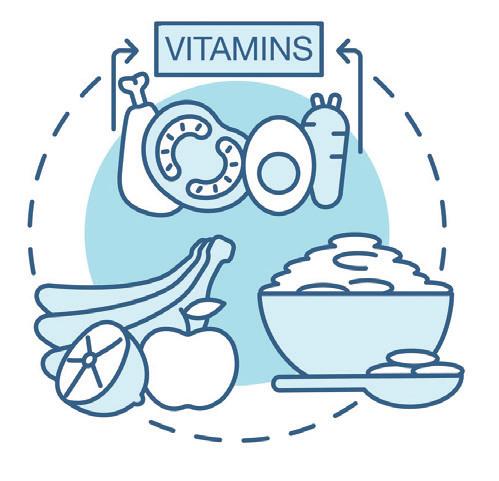
References/resources can be found at https://canadalymph.ca/pathwaysreferences.
LYMPHEDEMA THERAPY CERTIFICATION
TheKloseTrainingAdvantage:
• 135-hours of lymphedema education
75-hr engaging online home study module
60-hr (6 1/2) day classroom education
• Exclusive post-graduate resources
• Special pricing for Canadian Therapists; contact us for more information

ONLINE COURSES:
• Breast Cancer Rehabilitation
• Strength After Breast Cancer
• Wound Management for Lymphedema Therapists
• Head & Neck Lymphedema Management
• Add’l courses at klosetraining.com
For more information
mail to: info@klosetraining.com
https://www.klosetraining.com
1-303-245-0333 info@klosetraining.com klosetraining.com
One concern is the risk of nutrient deficiencies. The diet is low in carbohydrates, which can lead to a deficiency in important nutrients such as fiber, vitamins, and minerals.
Isa-Bella Leclair has been living with Parkes-Weber syndrome and primary lymphedema since she was born. She originally shared her story in Pathways (Fall 2016) and as the luncheon speaker at the CLF National Lymphedema Conference (2017). She was a 20-year-old student at the University of Ottawa at that time. We recently caught up with her to learn how she is doing, six years later. The following is from an interview with Anna Kennedy.


QTell us how your interest in accessibility was sparked?
My Master’s thesis focused on the responsibilities that civil engineers have towards ensuring that the built environment is accessible to everyone, especially people with disabilities.
QIs your current role something you pursued early and wanted to do?
I tend to follow opportunities that come my way. Even the research that I started during my Master’s happened because I realized accessibility is not really a focus in civil
engineering, although it should be. While I was doing that work, I got connected with people at the Parliament and landed this job. They are rehabilitating a lot of their building and our team makes sure that their designs are accessible. This job is right up my alley. But if you had asked me three years ago, what
Isa-Bella Leclair is an Acadian from New Brunswick, currently living and working in Ottawa. She completed both her undergraduate degree and a Master’s of Applied Sciences in Civil Engineering. She currently works as a project manager and engineer with the Universal Accessibility team at the Parliament of Canada.
do you want to do, I would’ve never told this because I didn’t know it was a career.
QWhat field of studies would people normally have who are studying, consulting and working on accessibility and disabilities?
My team is very small with only five people; two urban planners, one other engineer and a policy analyst. There is a lot of work being done on standards and this requires a lot of policy analysts. There are also those who are designing the buildings; architects, urban planners and engineers. The community of people with disabilities is also involved because they’re the ones who understand the needs. We’re listening to them and then using the experts in the building environment to make sure their needs can be implemented or designed in a way that’s sustainable and holistic because a lot of it intertwines.
QAre you able to tap into your personal lymphedema experiences?
Yes. We work with a lot of accessibility consultants who have more than 30 years of knowledge on a variety of people with disabilities. People with lymphedema would fall under many categories; whether it is stamina, dexterity or even invisible disabilities. It’s making sure that buildings are designed in a way that you don’t even really think about it; that those people can take a seat if they need to, that routes are designed in a way that you don’t need to walk too much and that there are access points beyond stairs etc.
We want to make sure that none of the groups are overlooked. It needs to be a really broad approach for everyone. In the past, accessibility has really focused on people with very specific mobility issues, who are using mobility devices such as wheelchairs. But we’ve come to realize that it goes way beyond that. And so, it’s been really good to use my experience of what I’ve lived to make it easier for me to understand those needs.
QHow is your lymphedema different from when you were a teenager?

During that time period I was adapting to change and how things were growing and swelling. Since the last time we talked, it’s been very stable and very manageable. It’s just a thing that I have to deal with every day but if I put my compression on and make sure not to do too much, then I know that it will be fine.
QHow do you manage your lymphedema?
It’s mostly through compression; I get measured regularly. I sleep with my bed elevated, which works well for me. It’s also knowing my own limits and to be mindful of that.
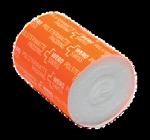

You had such a positive impact on me when you spoke at the conference. Here you were, a young teenager proudly wearing a short skirt on stage and showing your compression garment. I felt humbled because being much older; I kept hiding my lymphedema as I thought people were staring at me. I still
When you give your vehicle (Car,Truck, RV, Boat, Motorcycle) it will either be recycled or re-sold and you will receive a tax receipt for vehicles valued at $200 or more, and free towing in most areas across Canada.
In the past, accessibility has really focused on people with very specific mobility issues, who are using mobility devices such as wheelchairs. But we’ve come to realize that it goes way beyond that.
remember that as a pivotal point; my aha moment. I thought, “If she can do it, then why am I thinking it’s such a big deal?” That’s wonderful. I’m very happy to hear that.
QIt is unusual for someone at such a young age to have such a strong positive image. What do you attribute that to?

https://www.monarchce.com
canadianabilities.org
https://www.canadianabilities.org


Funds raised will help support family caregivers.

I received incredible support from my family and community when I was younger. I come from a very small town in northern New Brunswick, and I think that had a lot to do with it. Growing up, it felt almost like the people around me at school and in town knew about it and accepted me, so why would I hide it? I also traveled quite a lot as a kid with my parents and my sister. We loved
the beach and everything to do with water sports. Having my twin sister helped a lot, because it could be an example for me “if she’s doing it, why shouldn’t I be doing it too?”
I was born with a positive outlook. It’s always been my thinking that if I go to the beach and I decide to not wear a swimsuit or not go swimming because I’m afraid

people will stare, then it’s just letting them win. It ends up with me not enjoying myself. So it seems logical that, if I put on the swimsuit and if I go swim, then I can have a really good time. There are moments when people stare (people have even taken pictures) or people ask questions. But the fun would not be there either if I were to just hide. I know that it’s a hard realization to come to and it does take a lot of work and energy to say “This is okay. This is a choice I took,” and seeing why it’s the good choice.
I was also scared of what people would be thinking and I worried whether they’d be staring? However I came to realize that 95% of the people are not looking at my leg as I think they are. They’re looking at my face as they are talking to me a nd they’re not staring down. If they do notice, it’s opened up all sorts of conversations I never thought I’d have before.

Put meaningful effort into having confidence and positivity. Ensure contentment comes from you and not from others. A lot of people need external validation and having others say positive things about them.
QDo you have any advice or helpful tips for someone who is experiencing lymphedema during their teenage years?


Put meaningful effort into having confidence and positivity. Ensure contentment comes from you and not from others. A lot of people need external validation and having others say positive things about them. Whereas, if you’re able to work at finding that in yourself, then that will lead to being more assured and more confident and just being more positive overall.
But it does take work. People often ask me, “Oh, how do you do this?” as if it was just simple. It might look like a simple thing, but from 26 years of practice, it’s something that I’m used to and it comes quite easily because, to me, there’s no other option. But I really understand how if it’s someone, for example, with secondary lymphedema that hasn’t had to deal with it his or her whole life, then it could be more difficult because it’s not something you’re used to.
QYou grew up with primary lymphedema from the start and that can be seen as an advantage rather than the shock for people who receive the diagnosis for secondary lymphedema and think their life changes overnight. My initial diagnosis was Parkes-Weber syndrome and Klippel-Trenaunay syndrome. Both those diseases are key indicators of capillary, venous and arterial malformation, that also affect your lymphatic system, so that’s what makes it primary lymphedema. It was around the age of six or seven when I realized that how I looked was quite unique, and I started to process what that meant. I spent a lot of time with family and friends and no one really made an indication that I was different. And so, I kind of grew up from a really young age knowing that it really didn’t matter. LP
Thank you Isa-Bella. It was so nice to see your positive shining face on this Zoom call. Let’s stay in touch.

Advocacy is defined as any action that speaks in favour of, recommends, argues for a cause, supports or defends, or pleads on behalf of others.
Anarticle in Pathways (Fall 2022 issue) highlighted the discrepancies in lymphedema treatment reimbursement across Canada; specifically compression care that is not fully covered by most provincial healthcare plans. Further discrepancies also exist for intensive decongestive treatment, which is necessary to ensure the success of compression care. But is this fair? Why should the province you live in or the type of lymphedema you have (primary or secondary, cancer-related or not) dictate the extent of the coverage you are entitled to? These inequities cry out for a fundamental need for change in health policy.


Public health care in Canada is federally mandated and funded through transfer payments to the provinces. However, the responsibility of delivering medically necessary services lies with each province. Since “medically necessary” is not defined in Canada’s Health Act, each provincial jurisdiction has their own interpretation of what they will publicly fund. This is the
reason for the disparity in reimbursement across provinces and hence tireless efforts are required for advocacy on a provinceby-province level in Canada. We encourage readers to use March Lymphedema Awareness Month to write to the their provincial health minister, deputy health minister and their local Member of Parliament to request better lymphedema treatment.
https://www.canadalymph.ca/WLD
Rather than an email, a signed letter that is handwritten or typed can have the biggest impact. Send it the old-fashioned way by post so it ends up on someone’s desk and doesn’t get buried in his or her email inbox. Ensure your letter is brief, succinct and to the point; no more than 1 or 2 pages. Be sure to connect with your local provincial lymphedema association, to coordinate your requests and get their support.
A collective and coordinated effort is always more impactful.
If you are a person living with lymphedema
– Explain how lymphedema has affected you and your family personally. Describe the impact to your physical and mental health. How will your quality of life be improved if you receive better coverage? Including a photo can be powerful.
– What is your financial burden for getting proper treatment of care? Provide an annual figure of what it costs.
– Request that funding for lymphedema diagnosis and care is increased in your province to make treatment more accessible for all Canadians.
– Include printouts of supporting documentation (like the Reimbursement Schedule in Pathways Fall 2022, the Prevalence of Lymphedema in Pathways Spring 2020 and the CLF Compression Statement).

If you are a health professional treating lymphedema patients
– Write about a patient you may have who can’t afford treatment and the negative impact that has on managing their lymphedema.
– Explain what Complete Decongestive
Therapy is and how important it is for the proper management of lymphedema.

– Explain that proper care of lymphedema patients can reduce the load on other areas of the health system; for example, a reduction in visits to family physicians and acute hospital services for treatment of cellulitis, etc.

– Request that equitable access to care be provided to all those living in Canada with lymphatic disorders.


– Include printouts of supporting documentation.




In collaboration with your provincial association, be specific in what you are asking for. Is it reimbursement of compression garments, an increase in the percentage or frequency of reimbursement, better access to decongestive treatment or diagnosis or simplifying the process to access reimbursement?



Your local lymphedema association is already working hard and will have local representative contacts and inspirational





material for you to use. We encourage you to find their contact information on the CLF website so you can correspond with them directly and find out how you can help each other. It could be adding a personal story to their ongoing advocacy efforts, sharing your/their request on your social media or offering specific skills like social media, writing, communication, etc. that can strengthen their advocacy campaigns.
Writing personal letters is only one strategy for getting messages across to those who can make policy changes. Lobbying in front of decision-makers and raising awareness through traditional media and social media are just a few other options. Remember to

connect with your lymphedema association or advocacy group in your province or state, and at the national level. Collective efforts are needed to show solidarity and a singular voice in advocating for change. LP
We thank the following people who contributed ideas and suggestions for this article. We encourage you to click on their websites to read more about their successful advocacy efforts.

Lymphedema Association albertalymphedema.comHeather Ferguson, President Lymphedema

Lymphedema requires consistent selfcare to manage its complex challenges. The Dutch Best Practice Lymphedema guidelines recommend a chronic care model with an emphasis on active patient involvement, education, self-management and a more hands-off supportive approach by health professionals1 The following tips are a guide for you to successfully take control.
1 Risk reduction and education are the best medicine. By keeping active, maintaining a healthy weight, preventing infections, and avoiding injury to your affected limb, you will reduce the risk of these main triggers to developing or worsening your lymphedema. Timely diagnosis and early, regular treatment are also important2

Education can provide patients with essential tools to help self-manage their lymphedema. It is important to access current and reliable websites, books, and resources. The Canadian Lymphedema Framework (www.canadalymph.ca) and the National Lymphedema Network (www.lymphnet.org) have two excellent sites. A valuable resource on the CLF website to share with your primary physician is the downloadable “Physician Reference Card” on lymphedema prevalence and treatment in Canada3
2 Compression is your best friend. Compression bandaging provides the most volume reduction in the intensive phase of Complex Decongestive Therapy (CDT)4
Multi-layer compression bandaging has been used successfully for many years. Alternative compression systems. Alternative (and lighter) compression systems are now available. Having more than one option for compression allows a more customized approach to your lymphedema treatments.
Mastering self-bandaging can help you to successfully self-manage your lymphedema. A retrospective study on a self-bandaging programme in Quebec found the majority of participants were able to reduce their limbs to a level equal to the outcome achieved by trained therapists. When provided with adequate training and follow-up, these patients expressed an increased feeling of control over their lymphedema and appreciation for the effectiveness of bandaging5 The Canada-based Lymphedema Night Compression study (LYNC) showed significant improvement in arm lymphedema volume with the addition of nighttime compression whether through the application of compression bandaging or through the use of a nighttime compression system garment6
3 Compression garments are not all equal. Each person’s limb is unique and responds differently to compression. Your age, the condition of your skin and tissues, your ability to don/doff the garment, and cost are important considerations in garment choice. Knowing the many and increasing options available and the differences between various garment brands will help find the best garment for you. Replace your garments at least every six months to en-
sure you are getting the prescribed compression. Wearing your daytime garment every day in the maintenance phase of CDT will maximize the benefits gained in the intensive phase. Ready-made garments are sometimes a good starting point for upper limbs, if your arm length and shape is fairly normal. If a circular knit garment is not firm enough to control the swelling, you may require a less stretchy, custom flat-knit garment. If you have moderate/severe lymphedema, the shape of your limb is more bulbous in one or more areas, or your limb is extra short or long, you will require a custommade garment. Your lymphedema therapist and fitter will explore options with you to get the best fit and comfort. The garment fit and efficacy should be continually re-evaluated and modified. You may also consider a different garment type or compression level to wear during specific activities such as exercise or gardening.
4 Soft, supple and intact. Application of a good moisturizer with a low pH to the skin twice a day reduces the risk of skin breakdown and subsequent infection. A key goal of skin care is to prevent the potentially serious outcome of cellulitis (bacterial infection) in the affected body part. Cellulitis can make you very ill, cause lymphedema to get worse, and make you more susceptible to future infections. If the tissues have been irradiated, extra care is needed to protect the fragile skin in the area. If you get a cut or abrasion on the limb or region of swelling, you should clean the area immediately and apply an antibiotic ointment. At the first signs of infection (redness/rash, hot, increased swelling, pain, feeling unwell, fever), you should seek medical attention as the infection can spread very quickly and you may require intravenous antibiotics. Getting back into your compression quickly after cellulitis has been shown to reduce infection recurrences
5 Lymphedema and exercise…they can and should go together. Exercise can improve strength, quality of life, physical function and reduce fatigue, anxiety and depression in cancer survivors9. Exercise is strongly encouraged to help manage lymphedema and there have been no adverse side effects on lymphedema found. In a recent study published in 2020, resistance exercises did provide a reduction in arm volume, irrespective of use of a compression sleeve10
The 2019 Exercise Guidelines for Cancer Survivors9 advise the following cautions in regards to lymphedema and exercise, but remember these are only based on breast cancer related arm lymphedema (BCRL). If you have lower extremity lymphedema, there may be extra precautions to consider.
• If you have pre-existing lymphedema or comorbidities, get medical clearance from your doctor before starting any exercise program.
• “Start low and progress slow” with resistance exercise involving large muscle groups, 2-3 times per week, in a supervised setting. Evaluate the status of your lymphedema limb
after each exercise session. There are no specific weight restrictions.
• Aerobic exercise has been found to cause no lymphedema exacerbations, but evidence is insufficient to make specific prescriptions.



• It may help to wear compression (bandages/ garment) during exercise but this needs to be evaluated individually.

6 Consider self care as “me” time Changing perspective about the burden of self-care and lymphedema may help to increase your compliance with time-consuming activities. One of my patients noted that she managed better with all her self-care, including night compression, when she stopped resenting the time it took and considered it to be “ME” time. She would use the time to meditate or listen to her favourite music. Pathways Winter 20/21 edition includes a wonderful article about “Putting the Self back into Self MLD” which reinforces this theme11



7 Check in regularly. An important selfcare skill for patients is learning to monitor for changes in their lymphedema. This can prevent long term deterioration by alerting you to when you need a reassessment by your lymphedema specialist. Many patients report that by checking in regularly they feel more accountable, more inspired to keep up with self-care, to learn about new products, and benefit from refreshers on self-bandaging techniques, self-massage and/or other education.
There is no single recipe for treatment. Lymphedema therapists are trained to use all components of CDT to treat their patients; however, it is crucial to recognize that the response to treatment will differ from one individual to another. The cause and stage of your lymphedema can affect how ready and able you are to undergo lymphedema treatment and to learn self-management. It will take time for you and your lymphedema therapist



to find which treatments work best for you (and your lifestyle) and to devise a customized lymphedema management plan.
Manual lymph drainage (MLD) is one component of CDT still up for debate. A recent study of BCRL was unable to determine any added benefit of MLD even with newer fluoroscopyguided MLD12, and a Cochrane review recommended more research is needed to evaluate the value of MLD or self MLD for different types, stages and locations of lymphedema13
9 It takes a village. Dealing with a chronic condition such as lymphedema places you at the center and a team around you. Your family physician will be monitoring your cancer and lymphedema and ensuring other medical conditions are well-managed. A certified lymphedema therapist is valuable as lymphedema knowledge within the medical world is limited. These professionals undergo specialized training that currently includes a minimum of 135 hours. A knowledgeable and caring garment fitter is essential as fitting of a compression garment is an art as well as a skill. Supportive family and/
or friends also make the ongoing self-management practices of bandaging and massage easier for you. Homecare services can be an asset. There is a huge emotional component for many patients when they are diagnosed with lymphedema. The therapies can be overwhelming and you may experience body image concerns. Ask your doctor or therapist about referral to psychosocial services, or options for lymphedema support groups if you are struggling.
J Learn from others. Patients living with lymphedema often come up with innovative and brilliant ways to manage their condition. Here are a few of my favourites:
• Slip a crinkly shopping bag over your wrap to get your arm in your sleeve. It can easily be carried in your jacket pocket or bag.
• Carry a small tube of antibiotic ointment in




























your bag to treat small abrasions immediately.
• Wet your compression sleeve or stocking (after you put it on!) to cool your limb and your body on a hot summer day.
• Place your night compression garment in the freezer to cool it prior to putting it on.
• Shapewear, Spandex, and athletic type garments (cycling shorts, running bras, etc.) can be an inexpensive alternative for truncal or pelvic lymphedema.

Use a small foam paint roller to reach more areas on your trunk and shoulder during self-massage, or stone roller for head and neck lymphedema.
• Carry surgical gloves to put over and protect your compression glove.
• Use an older compression sleeve over your good one to protect it when gardening or working outside.
• Check out “Hints & Tips” in Pathways for more ideas, the Winter 20/21 edition14 LP
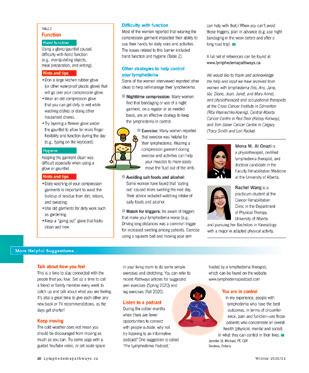
References can be found at https://canadalymph.ca/pathwaysreferences.
























































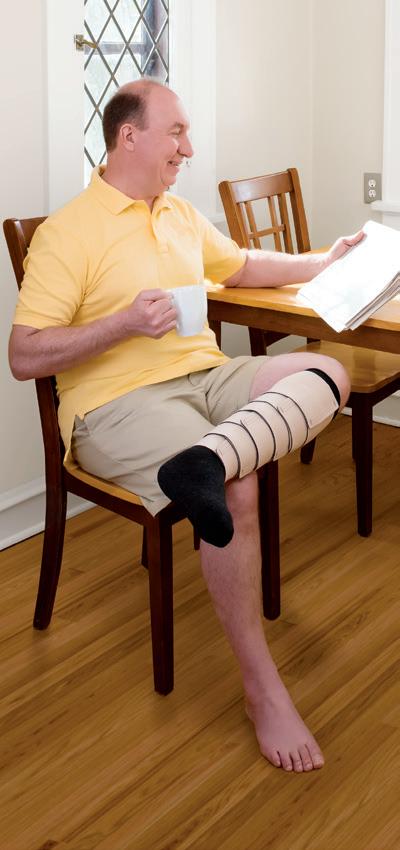

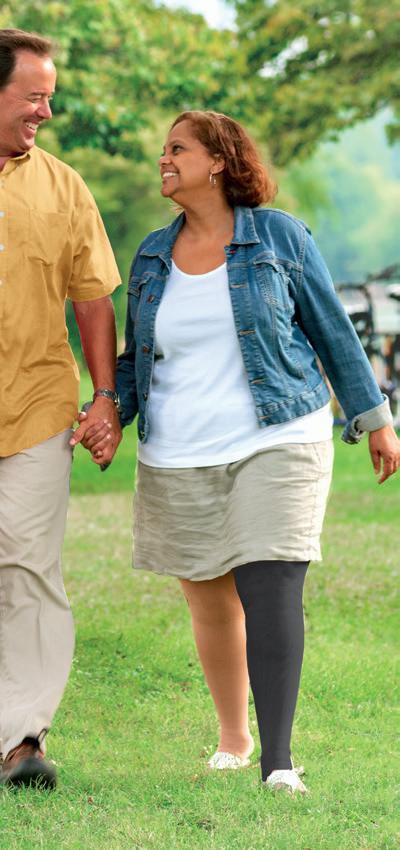




Around 25% of women undergoing Axillary Clearance (ANC) develop lymphedema (LE). Intervention with a compression garment is recommended to prevent LE but no randomized evidence exists to support this strategy. Methods: A randomized trial tested standard management versus application of graduated compression garments (20-24 mmHg) to affected arm, for 1 year. Women with node positive breast cancer undergoing ANC consented to arm volume measurements and those developing a 4-9% relative arm volume increase (RAVI) (subclinical LE) within 9 months post-surgery were randomized. Primary outcome was proportion of patients developing LE by 24 months in each group. Secondary endpoints included Quality of Life (QoL) in each group. Results: 143 patients were randomized between 2010 and 2015. The lymphedema rate at 24 months in the ‘no sleeve’ group was at 41%, similar to the ‘sleeve’ group (30%). 32 patients randomized to the ‘no sleeve’ group had a sleeve applied within 24 months. Body Mass Index (BMI) at randomization predicted LE at any time point. Patients with obesity (BMI > 30) had higher rates of LE in both groups (46%) compared to those with BMI < 30 (24%). No difference between patients was found in either group in changes in QoL. Compression sleeves applied after development of LE improved QoL scores (FACT-B p = 0.007:TOI p = 0.042). Conclusion: Early intervention with external compression garments does not prevent clinical LE, particularly in women with a high BMI > 30. The use of prophylactic garments in subclinical LE (RAVI < 9%) is unwarranted.

Source: Prevention of lymphedema after axillary clearance by external compression sleeves PLACE randomised trial results. Cancer Med. 2022 Dec 12. PMID:36507561 | DOI:10.1002/cam4.5378


Circumferential measurements (CMs) every 4th cm are commonly used to assess lower limb volume (LLV), but fewer measurements would be less time-consuming. The aim of this study was to establish the agreement between LLV measurements derived from CM every 4th cm (V4), 8th cm (V8), and 12th cm (V12), and to evaluate the intrarater test-retest reliability for each of the three measurement methods in persons with lower limb lymphedema (LLL). Methods/results: 42 persons with unilateral or bilateral LLL were measured twice, 2 weeks apart. Volume measurements for the V4, V8, and V12 methods were derived using CM. The agreement was evaluated using intraclass correlation coefficient and Bland-Altman graphs including 95% limits of agreement (LOA). The reliability was evaluated using ICC2.1 and standard error of measurement (SEM%) and smallest real difference (SRD%). The agreement was high for the V4 and V8 methods (ICC 0.999), and for the V4 and V12 methods (ICC 0.998). The graphs revealed slightly higher agreement between the V4 and V8 than between the V4 and V12 methods visualized by the 95% LOA (-117 to 62 and -236 to 132 mL, respectively). For all 3 measurement methods, the test-retest reliability was high (ICC 0.993-0.995) and the measurement error low (SEM%: 1.2%-1.4% and SRD%: 3.4%-3.8%).

Conclusions: The higher agreement between the V4 and V8 methods than between V4 and V12, and the high test-retest reliability in LLV measurements support the V8 method to replace the V4 method in persons with LLL.
Source: Circumferential measurements to calculate lower limb volume: What Segment Length Is to Be Recommended? Lymphat Res Biol. 2022 Nov 24. PMID:36449394 | DOI:10.1089/lrb.2022.0032

The aim of our study was to determine the causes of lower extremity kinesiophobia (whether it is biological or psychological) in individuals with lower limb lymphedema (LLL), and to compare the changes in fatigue and activities of daily living with healthy individuals. Methods: The study included 74 unilateral LLL patients (study group) and 74 individuals (control subjects). Causes of fear of movement were assessed with the Causes of Fear of Movement questionnaire; fatigue, with the Functional Assessment of Chronic Disease Treatment-Fatigue Questionnaire; and quality of life (QoL) with the Lymphedema Quality of Life QuestionnaireLeg. Results: One hundred forty-eight participants were included in the study, 74 of whom were in the study group and 74 in the control group. 63.5% of the lymphedema patients had primary lymphedema and 36.5% had secondary lymphedema. Fear of movement total score and QoL scores was higher in LLL group than control group. Total fear of movement score and biological subparameter score of fear of movement, fatigue, and some subparameters of QoL scores were found to be higher in primary LLL patients compared with secondary LLL. Conclusion: Fear of movement is common and QoL is impaired in patients with secondary LLL, more significant in primary LLL.
Source: Does Fear of Movement Affect Fatigue and Quality of Life in Lower Extremity Lymphedema? Lymphat Res Biol. 2022 Dec 29. doi: 10.1089/lrb.2022.0050. PMID:36580543
Juzo introduces Juzo Night, a lightweight, comfortable garment that helps prevent edema from rebounding during sleep or rest.



Foam channels



Removable fasteners
Easy to put on and take o
Thumb guard

Keeps edema from shifting
Follow lymphatic pathways, promoting lymphatic drainage

Anatomical angle
Prevents bunching and skin irritation, protects pressure points
Cooling material
Wicks moisture, reduces sweating

March 6, 2023 International Observance World Worldwide Lymphedema Day (WLD).

Learn more at www.canadalymph.ca/WLD
April 26-29, 2023 POWER Symposium (POWER Retail, Denver, CO POWER Lymphatics).
n https://thepowersymposium.com/
May 19-21, 2023 Australasian Lymphology Association. Auckland, NZ 2023 ALA Symposium: United Together.
n https://www.lymphoedema.org.au/
June 13-15, 2023 The 11th International Lymphoedema


Nottingham, UK Framework (ILF) Conference
n https://www.lympho.org/conferences/

LE&RN and NAVBO. Lymphatic Forum 2023. Banff, AB n http://lymphaticforum.org/
June 13-17, 2023

Sep 11-15, 2023 International Society of Lymphology (ISL). Genova, Italy 29th World Congress of Lymphology.

n https://www.isl2023lymphology.com/
Oct 2-3, 2023
British Lymphology Society.
Chester, UK The #BLS2023 Conference.
n https://www.theblsconference.com/
Nov 3-4, 2023
Canadian Lymphedema Framework
Toronto, ON National Conference. Moving Forward Together.
n www.canadalymph.ca/conference
Today just as Peter Mortimer arrived for a sandwich lunch, the postman delivered a great issue of your magazine. It is so generous and much appreciated. A lovely surprise to be linked to an article about the IAD by Dr Narahari. I was pleased to have a spare copy to give to an elderly Canadian who like me goes to an exercise session (mobility and friendship group) that occurs every Wednesday. Not my favourite session but one I support out of a sense of duty for our village elderly. Which amongst other things I do because I know it must be good for me, especially for a sense of balance, which at age 90 is beginning to be a weakness. Thank you so much. I am working on a second book focusing on any science I might have contributed to. It has a chapter on lymphatics. There is always much to explore. Today in discussion with Peter was the benefit of swimming. This I will not be doing but I realise I have neglected its benefits and may communicate to the IAD why perhaps in the long term we should think of it. If it has been covered by Pathways, perhaps you could give me a copy. I will also attach my latest publication.
With best wishes and thanks Terence Ryan, Great Bedwyn, England
Editors Note: Professor Terence Ryan is a retired dermatologist and a lymphedema pioneer. Be sure to read his profile in the Winter 2022/2023 edition of Pathways


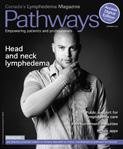
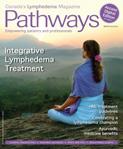

The
https://www.canadahelps.org/en/charities/canadian-lymphedema-framework-partenariat-canadien-du-lymphoedeme/



Bauerfeind’s flat knit Curaflow garments are perfectly adapted to the lymphedema or lipedema of the patient’s legs, arms, or hands.
VenoTrain curaflow at a glance:
Recommendation
Lymphedema: stages 1 to 3
Lipedema: stages 1 to 3
A consistent and ideal pressure gradient with noticeable effect throughout the wearing duration
Intelligent longitudinal structure for ideal lymph transportation
Smooth microfibers for comfortable donning
Breathable, moisture-regulating knitted fabric for excellent wearing comfort
For more information on our Curaflow products please visit our Lymphedema catalog!





